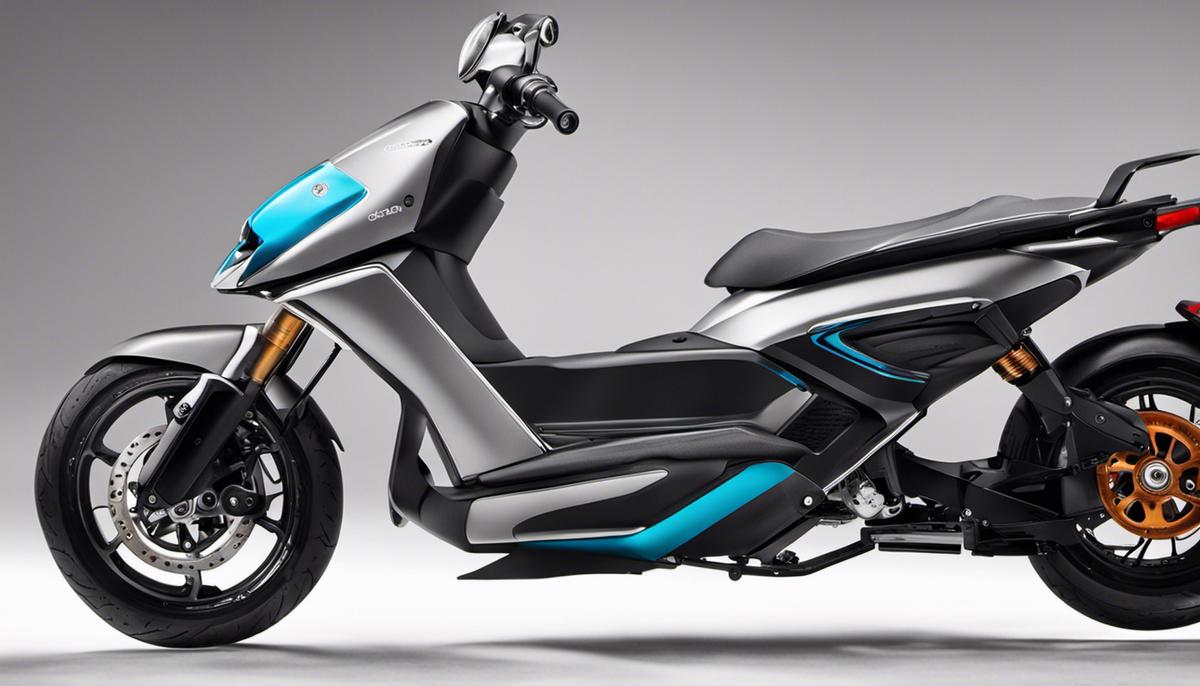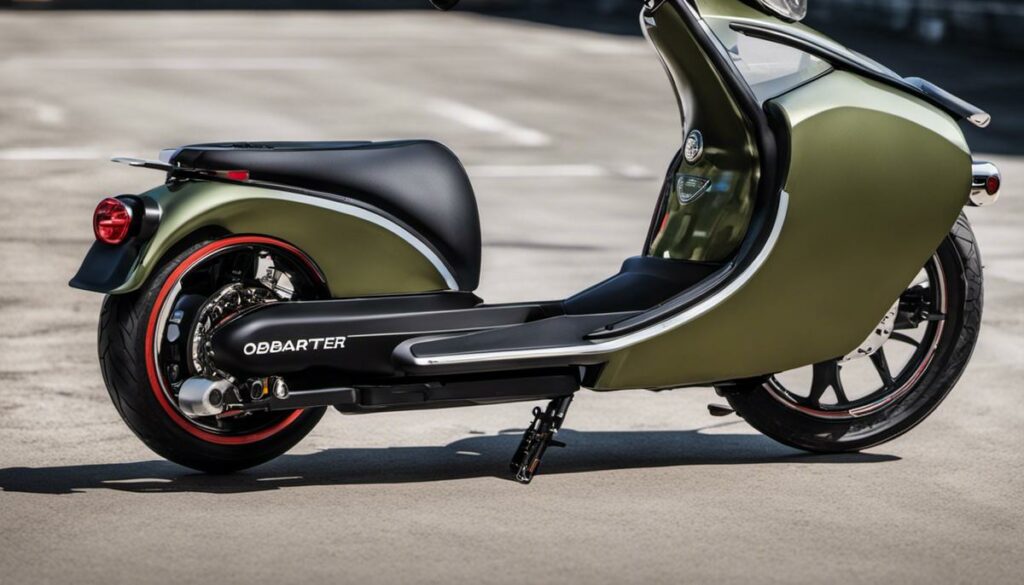Looking to ride smoothly in the world of urban mobility, Obarter Scooters have become a go-to choice for people around the globe. As these scooters become a more integral part of our daily travel, understanding how to maintain and troubleshoot them becomes equally paramount. In this discussion, we will guide you through the foundational knowledge about Obarter Scooters, from the intriguing technology behind their operation to the various components and their interactions. Emphasizing the importance of regular maintenance, we will dive deeper into the routines that ensure the scooter performs at its peak for your daily needs. In addition, we will empower you with the ability to identify and rectify common issues that may occur, and the discernment to know when it’s time to seek expert help. Above all, we will highlight the essential safety measures and best practices that assure your riding, charging, and storing of your Obarter Scooter, prolonging its life while keeping you safe.
Understanding Obarter Scooter
Understanding Obarter Scooter Parts and Functions
The Obarter Scooter is made up of various interconnected parts, each serving specific functions to ensure efficient operation. Let’s start with the frame, made of reinforced aluminum alloy, which is both light and durable, providing a sturdy base for the entire scooter.
Mounted to the frame is the brushless direct current (DC) motor, usually located in the front wheel, responsible for propelling the scooter forward. Controlling the speed of the motor is the scooter’s Electronic Speed Controller (ESC). It’s a vital part of any electric scooter like the Obarter, as it translates the user’s throttle commands into varying motor speed.
The throttle, usually located on the right handlebar, allows the rider to control the electric scooter’s speed. Rolling the throttle forward increases acceleration, while rolling it back decreases the speed.
The braking system in an Obarter Scooter is usually a combination of disc brake and eABS regenerative anti-lock brake for a safe and responsive stopping power. The disc brake operates by creating friction against the wheel hub, while the eABS regenerative brake feeds energy back into the battery when activated, extending battery life.
The scooter’s shock absorbers or suspension system is another crucial aspect, as it helps cushion riders from bumps and uneven surfaces, providing a smoother ride.
Attached to the front of the frame, you’ll find the scooter’s headlight and rear taillight, designed to provide visibility and safety for the rider during low-light conditions.
To monitor the scooter’s functions and power status, there’s a multifunctional console with a digital display located on the handlebar. This console notifies the rider of the scooter’s speed, battery life, and other relevant information.
Last but not least, Obarter Scooters are powered by high-quality lithium-ion batteries, which are known for their longevity and efficiency. They are generally located towards the bottom of the frame for a low center of gravity, improving balance and stability.
The Technology behind Obarter Scooters
The real magic of Obarter Scooters lies in the technology behind the scenes, bridging each component to work in perfect harmony.
One example of this technology is the scooter’s Kinetic Energy Recovery System (KERS). When the eABS regenerative brake is activated, energy normally lost during braking is converted into electrical energy, then stored in the battery for later use. This not only extends battery life but also increases the scooter’s overall efficiency.
Another highlight is the scooter’s smart Battery Management System (BMS), which closely monitors the health of the battery, maximizing its performance and lifespan. The BMS prevents overcharging, under-voltage, and overcurrent, ensuring battery safety and efficiency.
To sum up, understanding the various parts and technology behind Obarter Scooters offers insights into how each component works together to provide a safe and enjoyable riding experience.

Regular Maintenance of Obarter Scooter
Daily Maintenance
Regular and thorough daily checks ensure the longevity of your Obarter Scooter. For battery care, it’s crucial to only use the charger that came with the scooter and not overcharge the battery, as this might shorten its lifespan. Charging should be done at room temperature, away from moisture and heat. It is recommended to plug the charger into a scooter before plugging it into an electrical outlet.
For daily maintenance, do a visual inspection of the scooter to check for any visible damage or loose parts. Check the brakes by activating them and making sure the scooter stops quickly and smoothly. Pay special attention to the brake pads and replace them if they’re worn out.
Weekly Maintenance
Perform a tire pressure check weekly. Low pressure can cause bumpy rides and even damage the wheel or result in an accident. If you find the tires under-inflated, pump them up to the recommended PSI (usually indicated on the tire sidewall). Inspect the tire treads for signs of wear, checking the depth and surface. Replace tires if they’re excessively worn out or damaged.
Test the brakes weekly to ensure they’re in good condition. Adjust the brake cables if necessary. The scooter should stop smoothly without skidding, and the brake handle should not be too tight or too loose.
Ensure the scooter’s motor is working properly. Look out for any strange noises or smells during operations which might suggest a malfunction.
Monthly Maintenance
On a monthly basis, clean your scooter, removing any dust or debris that may have accumulated in the crevices. For electric scooters, ensure this is done with a damp cloth rather than water to avoid ruining the electronics. Lubricate the chain or belt if your scooter has one. Check, clean, and lubricate other moving or high-friction parts too, such as the suspension or joints.
Try giving your battery a full charge and discharge at least once a month. Despite common perception, this is actually beneficial to the cell chemistry and will help maintain its capacity over the long term.
Check all the screws and nuts on your scooter, tightening those that have become loose over time. Also, examine the exterior of the scooter for any wear and tear or corrosion, having them replaced or repaired respectively.
Monitoring and conducting proper maintenance will help ensure that your Obarter Scooter stays in smooth working order, providing a safe and enjoyable ride. Regular maintenance can also save you from more costly repairs in the future.

Photo by scottsweb on Unsplash
Identifying and Fixing Common Issues
Identifying Motor Problems with Obarter Scooters
Recognizing motor issues in Obarter Scooters involves knowledge of normal operation. Scooters that hesitate to start or experience intermittent power during a ride may suggest a motor problem. If the scooter fails to reach its top speed or struggles to maintain a consistent speed, it’s a red flag. Noises not typically associated with your scooter’s running like grinding, growling, or rattling could signify a motor complication.
Fixing Motor Problems in Obarter Scooters
Motor complications can be complex, and it is highly recommended to seek professional assistance for serious problems. However, homeowners can try to make minor adjustments. Verify that all connections to the motor are secure. Check the motor brushes for wear and tear. If they seem excessively worn or damaged, consider replacing them. Always turn off your scooter and disconnect the battery before inspecting or working on your motor.
Identifying Battery Failure in Obarter Scooters
Generally, Obarter Scooters can run for several miles before the battery gets drained. If your scooter’s battery life significantly decreases or doesn’t charge fully, it may signal a battery problem. Physical damage to the battery or any warning lights indicating battery issues on your scooter’s dashboard should not be ignored.
Fixing Battery Failure in Obarter Scooters
For a faulty battery, the first step is to inspect it visually for any physical damage like leaks or bulges. Ensure that the connections are clean and secure. In the case of noticeable damage or persistent issues even after cleaning and securing the connections, replacing the battery is the best option.
Identifying Brake Malfunction in Obarter Scooters
Brakes are crucial for ensuring the safety of riders. Signs of a brake malfunction include squealing or grinding noises when braking, a wobbly or vibrating feeling when brakes are applied, decreased responsiveness or brake “fade,” and pulling to one side when braking.
Fixing Brake Malfunction in Obarter Scooters
For brake issues, it’s generally recommended to seek professional help. However, some minor issues can be addressed at home. Regularly inspect the brake pads for wear. If they appear thin, it’s time to replace them. Brake cables should also be checked for any signs of fraying or kinks and replaced if any are found. An imbalanced ride due to brake issues might be resolved by adjusting the brake cables to ensure even tension on both sides.
In all cases, enlisting the support of a professional mechanic is advisable if your troubleshooting attempts do not solve the problems. Understanding the above signs and symptoms of common Obarter Scooter issues helps to maintain the scooter for peak performance and rider safety.

Safety Measures and Best Practices
Safety Measures While Riding the Obarter Scooter
When it comes to riding an Obarter Scooter, proper safety precautions are crucial. Always wear a helmet and other protective gear like elbow and knee pads to protect against injury. Reflective gear is also necessary if riding at night. Observe traffic laws, signs, signals, and road markings, keeping in mind that scooters are subject to the same laws as bicycles. Stay aware of your surroundings, constantly looking out for pedestrians, cars, and other obstacles. Avoid riding under the influence of drugs or alcohol, as this can impair your judgment and reflexes.
Best Practices for Riding the Obarter Scooter
Maintaining the appropriate speed is essential for the longevity of the Obarter Scooter. If the scooter is persistently used at top speed, its components may wear down quicker. Using the scooter on flat, smooth surfaces can prevent potential damages that rough terrains might cause. Regular maintenance is important, which includes tightening loose parts, lubricating moving components, and inflating the tires properly.
Safety Measures for Charging the Obarter Scooter
When charging the Obarter Scooter, use the charger provided by the manufacturer. Using an incompatible charger can damage the battery or the scooter’s electronic system. Do not leave the charger connected for an extended period after the scooter is fully charged, as overcharging can deteriorate battery health. Furthermore, charge the scooter in a well-ventilated space to avoid overheating and always keep the charging area clear of combustible materials.
Best Practices for Storing the Obarter Scooter
Proper storage of the Obarter Scooter can significantly extend its lifespan. Store the scooter in a place with moderate temperatures, as extreme heat or cold can harm the battery. To protect it against dust and moisture, cover the scooter if you store it outside or in a garage. Lastly, in case of the scooter not being used for a long duration, ensure to charge it occasionally to prevent the battery from draining completely.
Safety Measures for Maintenance of the Obarter Scooter
Before performing any maintenance tasks on your scooter, ensure it is powered off to avoid accidental starts. Always refer to the user manual for proper maintenance instructions and use suitable tools. Do not attempt to repair or modify the electric circuitry unless you are an expert, and in case of serious faults, it is recommended to seek support from the manufacturer or a professional repair service. Avoid making adjustments that could impact stability or load-bearing capacity.
By following these safety measures and best practices, you can ensure the efficient and safe use of the Obarter Scooter while prolonging its lifespan.

As we journey through the galaxy of urban mobility, learning how to maintain and operate an Obarter Scooter can ensure a smooth and safe ride. Not only will this knowledge minimize unnecessary disruption due to mechanical issues, but it also extends the life of your scooter, offering a long-lasting and reliable companion for your navigation. Remember, consistent maintenance, quick issue detection and remedy, combined with safe riding and storage practices are the cornerstones for enjoying the benefits of your Obarter Scooter. With a firm grasp of all we’ve discussed, scouting the city on your scooter becomes an experience characterized by convenience, reliability, and above all, sheer fun. Equip yourself with this knowledge, and make the most of your urban travel with Obarter Scooter.

